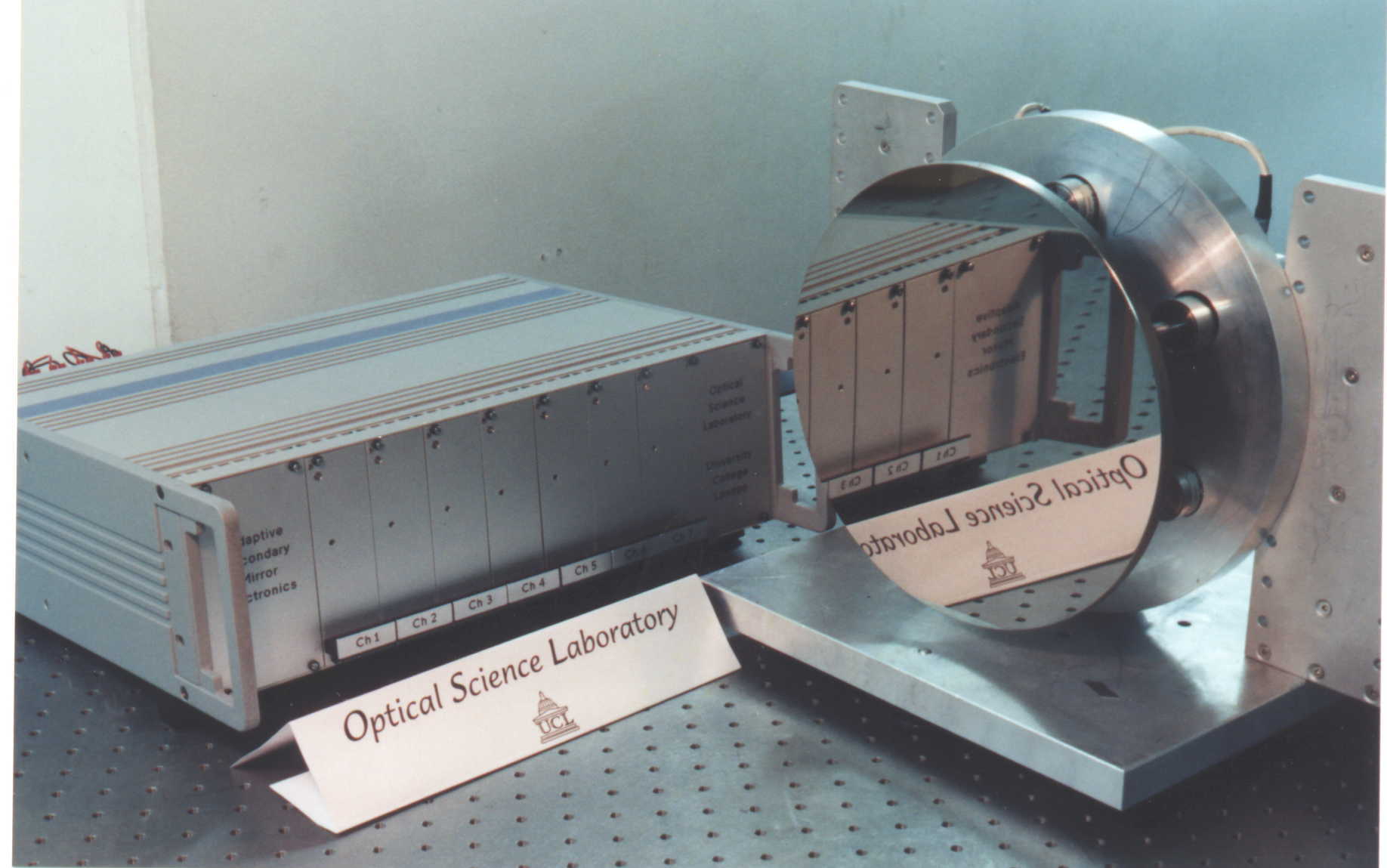| Science Drivers for ASMs Currently implemented astronomical AO systems operate like auxiliary instruments separate from the main telescope optics. Additional relay optics are used to form an image of the telescope pupil, or an image conjugated with a nominal turbulent layer in the atmosphere, on an adaptive optical element mounted downstream from the telescope focus. Further re-imaging optics are then required to bring the light to a focus on the wavefront sensing camera and science instrument. A separate mirror for removing the tip/tilt of the atmospheric wavefront is also usually included in such systems. Beckers [1] in 1989 proposed the use of the existing secondary mirror in a telescope as a wavefront correction device for correcting atmospheric distortions. Since this approach introduces no extra relay optics it provides several advantages over conventional astronomical AO systems. These advantages are:
Since adaptive secondary mirrors can in principle provide corrections at any necessary frequency and degree of motion, this may obviate the need for expensive support mechanisms associated with conventional secondary mirrors, such as high-speed chopping drives and focus drives. Current Adaptive Secondary work at OSL
The OSL adaptive secondary prototype OSL has been at the forefront of the development of adaptive secondary technology. In recent years OSL has undertaken a series of commissioned studies [2][3][4], that have demonstrated the optical efficiency, and mechanical feasibility of performing the adaptive correction with deformable secondary mirrors. In furtherance of this work OSL has built and tested a prototype adaptive secondary mirror (see figure 1) in order to investigate the performance and technological issues.
Schematic of the adaptive secondary prototype The prototype consists of a 270mm diameter mirror faceplate to the back of which are interfaced 7 magnetostrictive actuators via flexures. These in turn are connected to a rigid aluminium mirror support (or reaction plate) against which the forces react. The faceplate is manufactured from a 10mm thick aluminium sheet. The use of aluminium as a face plate material provides several advantages over the conventional glass-ceramic material. These are:-
A similar glass-ceramic faceplate would be highly vulnerable to damage when removed from the telescope (e.g. for cleaning, aluminising, or maintenance of the actuators or control electronics). A minor or even possibly microscopic defect could act as a stress-concentration that could lead to catastrophic failure in service at an indeterminate time in the future. The magnetostrictive actuators used in the demonstrator contain a strain gauge position feedback system, which can be used in a control loop to compensate for the hysteresis properties of the actuators, thus linearizing the mirror response. The actuator spacing and arrangement is the same as that which has been proposed for the Gemini South 8-m telescope [2] so the demonstrator is essentially a subsection of this adaptive secondary design with a sufficient degree of freedom to produce several low-order aberrations. The demonstrator has been successfully used to validate important technological aspects of the OSL approach to adaptive secondaries. The manufacturing, assembly, disassembly, reassembly and calibration techniques for an adaptive secondary system have been developed and it has given insight into the replacement of actuators and confirmed the previous finite element analysis of the actuator influence functions. This system has been extensively statically tested and the results presented in recent conference proceedings and referred journals [5][6][7][8]. The work has also formed the basis of a PhD thesis by J.H. Lee [9]. Recently initial tip/tilt testing of the current system has been performed with the demonstrator operated in closed loop with a quad-cell sensor. Tip/tilt aberrations were generated with a rotating glass plate and figure 2 shows the resulting quad-cell sensor signal for the demonstrator in open and closed loop. As can be seen the tip/tilt aberration was suppressed by a factor of ~10 in this preliminary experiment. With refurbishment of the actuators, residual hysteresis and thermal effects will be reduced which should improve the tip/tilt result. More figures of the ASM can be found here References
|

